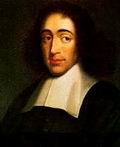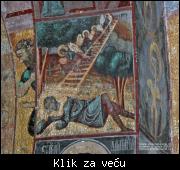offline

- Pridružio: 07 Avg 2008
- Poruke: 2528
- Gde živiš: VII kat
|
Citat:Plato’s ideal seamlessly unites theoretical knowledge with practical ability, but his trumpet call for philosopher-kings would not be taken up by his student Aristotle, who shows his allegiance to “common sense” by firmly separating wisdom into two different types, practical and theoretical. For Aristotle, each virtue is a mean between vices, a way of balancing opposing passions. Courage, for example, is a mean between cowardice and recklessness, between excessive fear and excessive fearlessness; the courageous person is neither fearful nor utterly fearless before danger, but remains resolute and self-possessed. Analyzing many virtues in this way, Aristotle concluded that without virtue, one cannot live well: the world is full of terrors, for example, and so an absolute coward would not dare get out of bed in the morning. Cultivating the virtues is the most practical thing one can do. But chief among these practical virtues is phronesis: practical wisdom, or prudentia in Latin. Phronesis is an elusive quality of mind. It may come with experience, but it cannot be reduced to a rule. There is no algorithm for being wise. Indeed, the desire for such an algorithm in this uncertain, changeable world is one sure sign of folly.
In this Aristotle’s own practical good sense has impressed many readers. Even more impressive were his scientific accomplishments in logic, biology, and psychology, and this theoretical knowledge may have made him more partial to the second type of wisdom he delineates: sophia, or wisdom proper. Practical wisdom deals with things that change (e.g., one’s fluctuating financial situation) but theoretical wisdom is directed toward what does not change: mathematical and intellectual truths, the heavens and natural laws, God. Knowledge of the stars’ paths is not at all necessary, yet it is the best and most compelling type of knowledge. It fulfils our nature as “rational animals,” for the sophia constituted by logic, mathematics, physics, and metaphysics will raise the mind to the serene self-sufficient type of thought that, Aristotle speculated, was the essence of God. Theoretical wisdom thus raises us from animality to something more like the divine.
...
For his followers, however, the attempt to harmonize Scripture with Greek philosophy would remain a necessary and fruitful one. In this the Middle Ages was dominated by two figures. Saint Augustine made wisdom (sapientia) the highest of life’s seven stages, when the eye of the soul looks upon God with intimate love: “Our hearts are restless, Lord, until they rest in thee.” The road to this beatific vision includes not only Scripture but also a judicious study of pagan authors, especially Plato, whose writings seemed most sympathetic to the mystical ardor of the earlier Middle Ages. Augustinian theology was the dominant paradigm in Western Europe from the fifth to the twelfth centuries AD, influencing kings, popes, abbots, and laity alike. But with the rediscovery of more Greek texts from the twelfth century, Aristotle’s reputation began to overshadow that of Plato. Saint Thomas Aquinas adopted Aristotle as “the philosopher” and set out to Christianize phronesis and sophia as prudentia and sapientia, respectively. Agreeing with the Greeks that wisdom is the highest human attainment, Aquinas opens his Summa Theologiae with the claim: “Sacred doctrine (i.e., theology) is called wisdom (sapientia) in the highest degree.” As with Aristotelian sophia, Thomistic sapientia is knowledge of the changeless, notably God. But unlike Aristotle, Aquinas makes physics and metaphysics subordinate to the study of Scripture and the Fathers: the Christian theologian accepts traditional writings as authoritative and seeks to harmonize their various statements with each other and with pagan insights to form a single, coherent whole — a Summa, summarizing human wisdom in its totality.
http://www.incharacter.org/article.php?article=162
Prudentia/Sapientia - jedna od kardinalnih vrlina hrišćanske teologije.
Ticijan, Alegorija mudrosti ili razboritosti, oko 1567.
Ostalo piše na slici. 
EX PRAETERITO PRAESENS PRUDENTER AGIT NI FUTURUM ACTIONEM DETURPET
Instructed by the past, the present acts prudently lest the future spoil [it's] action.
Slika glorifikuje razboritost, mudrost, kao uzor za tri forme vremena - sadašnjost uči od prošlosti i dela sa poštovanjem prema budućnosti. Ova ideja da prudentia primenjuje iskustvo prošlosti na sadašnjost sa dužnim poštovanjem prema budućnosti je opšte mesto klasične misli, tradicionalno pripisivano Platonu. Održava se kroz srednji vek i renesansu u literaturi kao i u umetnosti. Jedan od vidova njenog predstavljanja je i oblik ljudskog bića sa tri glave, analogno sa jednim tipom svetog Trojstva. Tri forme vremena su na ovoj slici izjednačene sa tri doba čoveka u gornjoj trijadi. Donja trijada, sa glavama vuka, lava i psa, ovde je zanimljivo rešenje, čije je poreklo Panovski doveo u vezu sa skulpturom Brijaksisa, kultnim likom boga Serapisa iz njegovog hrama u helenističkom Egiptu. Pokraj Serapisovih nogu nalazilo se troglavo čudovište sa glavama vuka, lava i psa, obavijeno zmijom, a ono je obožavano i samo po sebi, i prodavane su male statuete sa njegovim likom. Zanimljivo je to da Makrobije boga Serapisa, kao i druga glavna božanstva, tumači samo kao posebnu manifestaciju boga sunca, pa kako kretanje sunca proizvodi i determiniše vreme, on kaže kako čudovište predstavlja vreme - zmija vreme uopšteno, a tri glave tri forme vremena: lav sadašnjost, vuk prošlost i pas budućnost. Ovaj zoomorfni lik vremena vaskrsao je Petrarka, koji ga je doveo u vezu sa Apolonom, pa je Makrobijevo čudovište prodrlo u zanimljivu grupu kasnosrednjovekovne literature koja je pod uticajem mitografije. Tako je među iluminacijama XV veka dosta onih sa Apolonom i troglavim čudovištem, ali ne u svom originalnom obliku sa četiri noge, već sa zmijskim telom. Istovremeno, gotovo opsesivno zanimanje za egipatske ili pre pseudoegipatske hijeroglife i emblematiku dovelo je do novog i neočekivanog razvoja. Povezanost makrobijanskog čudovišta sa Serapisom i Apolonom je slabila, a tri glave su postale odvojene od tela, bilo reptilskog bilo četvoronožnog, ostale su samo biste. Ovaj zoomorfni signum triceps ili tricipitium prvi put se javlja u Hypnerotomachia Polyphili 1499, i ubrzo uzurpira funkciju koju je originalno imala antropomorfna trijada, a usled egipatskog porekla je i moderniji i sofisticiraniji simbol ne samo vremena, već i mudrosti. Dalje Panovski u svom delu o Ticijanu - "Problems in Titian, mostly iconographic", navodi primere iz renesansnih emblematskih zbornika, ali naglašava da se nigde osim kod Ticijana ne javlja kombinacija ovih zoomorfnih i antropomorfnih simbola.
Na osnovu sličnosti sa identifikovanim likovima sa drugih slika, Panovski smatra da je lik starca autoportret, da je lik u sredini njegov sin Oracio, a da je mladić Marko Večeli, njegov najdraži nećak, te da namenu slike treba tražiti u veoma ličnoj sferi. Panovski nudi interpretaciju prema kojoj bi najprimerenija namena ove slike bila ta da stoji kao paravan ili poklopac sefa sa porodičnim vrednostima. Ticijan, poznat po veoma razboritom finansijskom poslovanju, ovako je budućim pokolenjima nameravao da prenese poruku da i oni najveća pokretna blaga stave pod zaštitu vremena i mudrosti.
|





















